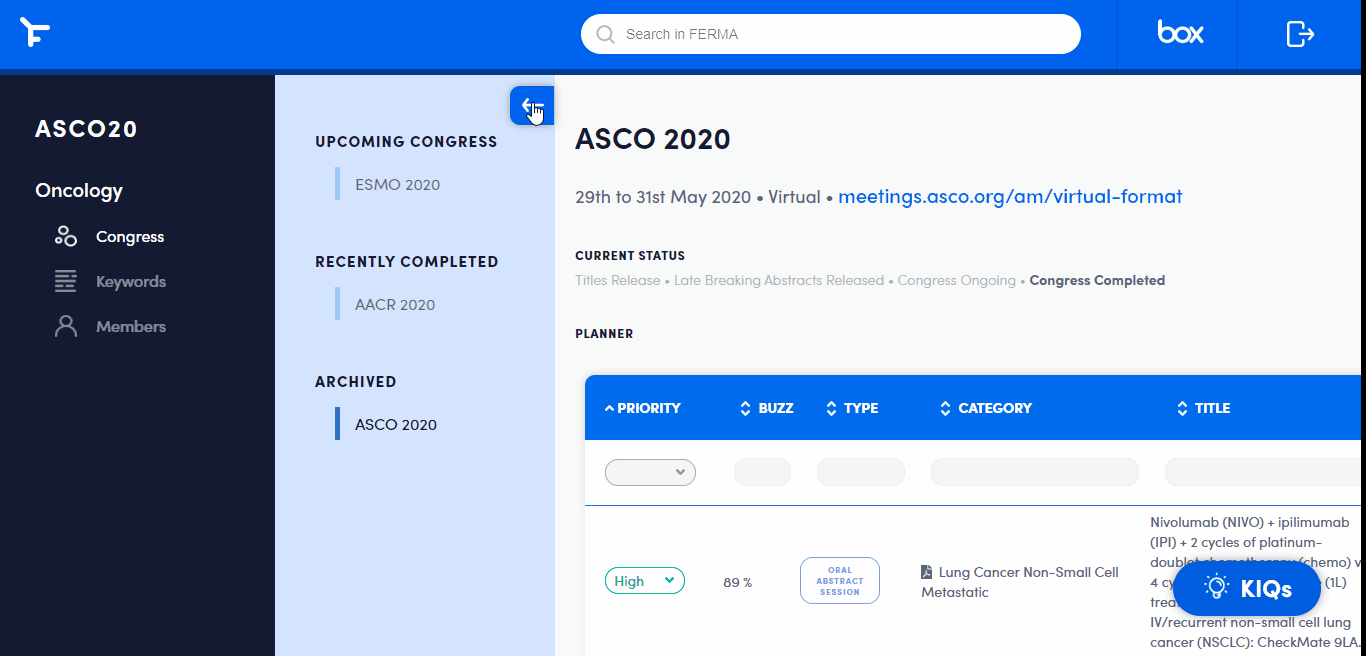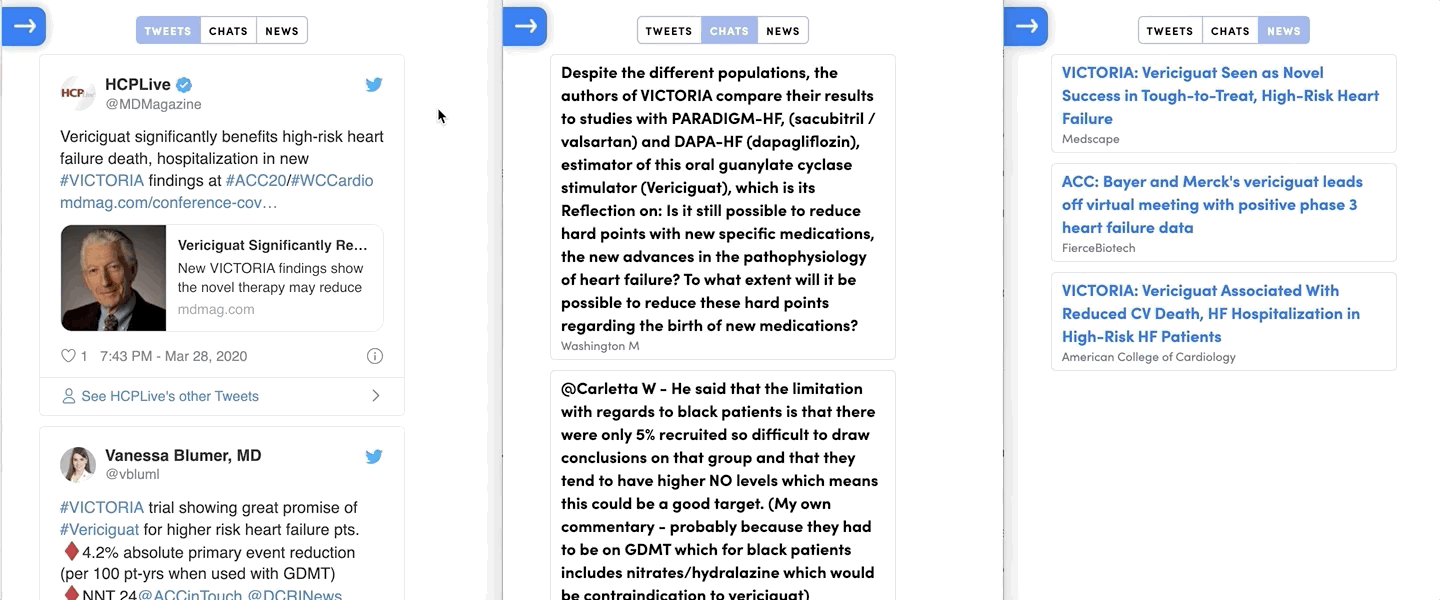Developing a new playbook for covering virtual conferences

Since March, over 500 medical conferences have moved to a fully-virtual format. Given the current state of the pandemic and the CDC’s guidelines for event organizers, it is likely that virtual conferences will continue to be the standard for the foreseeable future. In order to make the most out of the opportunities virtual conferences provide, teams will need to adapt rapidly.
At Ferma, we’re currently dedicating our efforts to helping our clients address some of the challenges that teams are facing as a result of conferences going virtual by:
- Gathering and consolidating key information delivered through live-streamed presentations
- Gauging audience and KOL reaction to key sessions across social media and industry news
- Uncovering key information gathered from a high volume of disparate sources
- Answering key questions through pre or post-conference market research
The recent American Society of Clinical Oncology annual meeting was one such major conference that moved forward in a completely virtual manner. We attended this meeting in support of teams seeking to optimize their coverage of virtual meetings.
Gathering and consolidating key information delivered through live-streamed presentations
Conference organizers are working to ensure that the latest science is presented in a highly accessible manner and includes opportunities for follow-up discussion/Q&A. Even at in-person conferences, gathering this information for post-hoc review and analysis is a challenge—however, digital presentation provides an opportunity for our AI to capture and organize this information in a smart, searchable slide deck.
Ferma works to convert video presentations of sessions to searchable, slide decks by matching transcription of the speaker to related visuals (slides, posters, etc.). The resulting output is then equipped with our life sciences synonyms & relationship search to ensure you’ll be able to revisit key moments or find the information you’re looking for in the days following the conference.

Gauging audience and KOL reaction to key sessions across social media and industry news
The ensuing buzz of excitement (or disappointment) after data is presented is a key piece of data that could go missing during virtual conferences. To address this issue—Ferma employs “digital listening” to bring in perspective and opinions from key stakeholders across social media and industry publications to give you a centralized look at the reaction.

Uncovering key insights from a high volume of disparate sources
Even when information is centralized and well-organized, the volume of material presented at a given conference can prove overwhelming and uncovering buried information requires time-intensive manual effort. To address this issue—Ferma provides a natural language search tool that can find the answers to key questions for your team, such as:
- HER2CLIMB trial endpoints for patients with brain metastases
- HER2CLIMB duration of treatment
- HER2CLIMB eligibility criteria
Ferma draws the necessary connections by using life sciences synonyms and relationships to uncover key pieces of data and information that a basic text search would miss.
Answering key questions through pre or post-conference market research
Even after reviewing priority sessions and related discussions, key questions around the reactions of physicians and other healthcare professionals as well as anticipated changes to practices can remain.
[See what practicing oncologists thought of this year’s virtual ASCO meeting.]
By working with ZoomRx’s market research team and HCP panel of over 20,000, Ferma can provide answers to these questions through rapid-turnaround research.
If you're interested in using Ferma for your own conference coverage, leave your info below someone from our team will be in touch shortly to schedule a 30-minute demo.
Request a demo.


